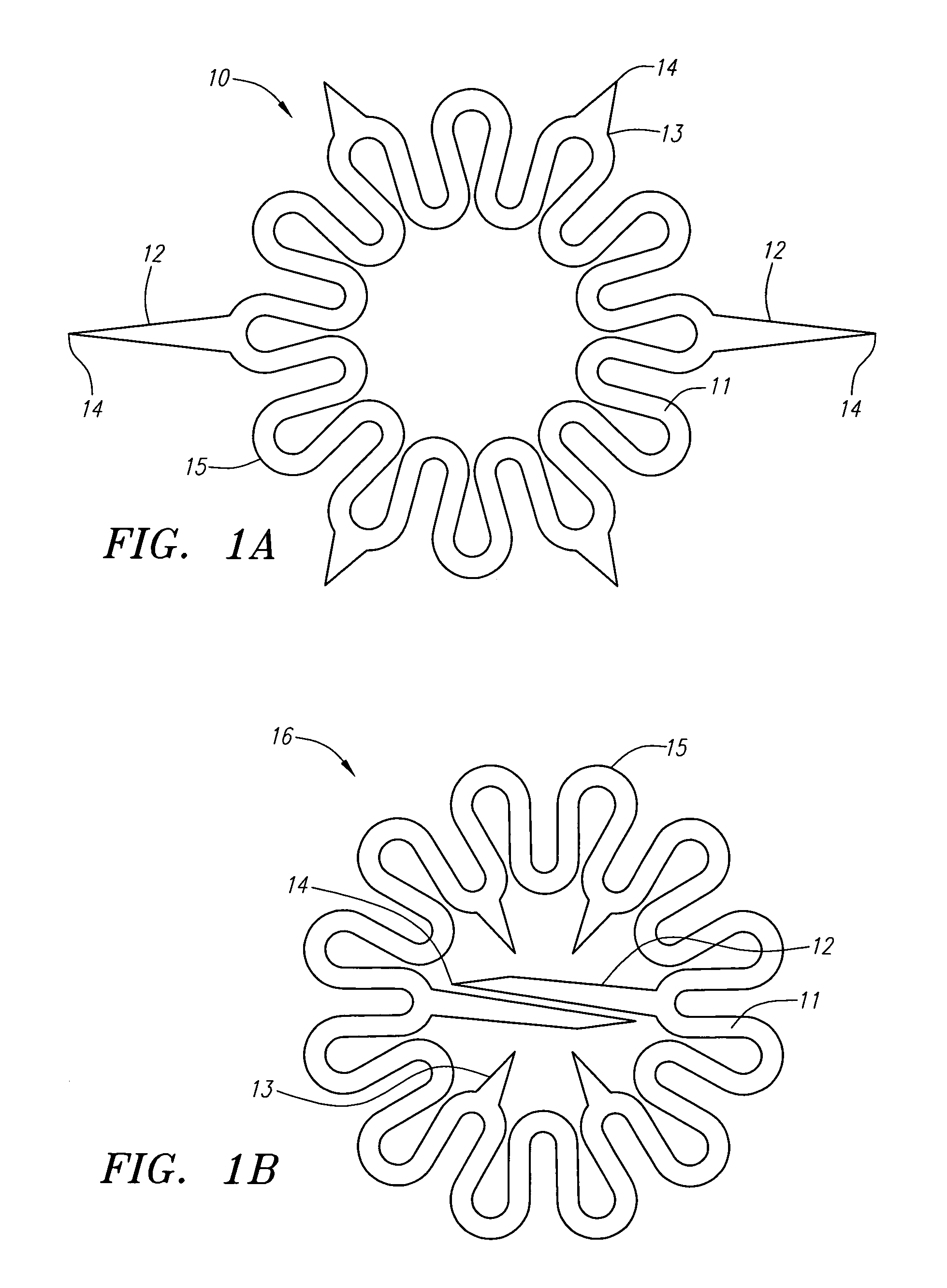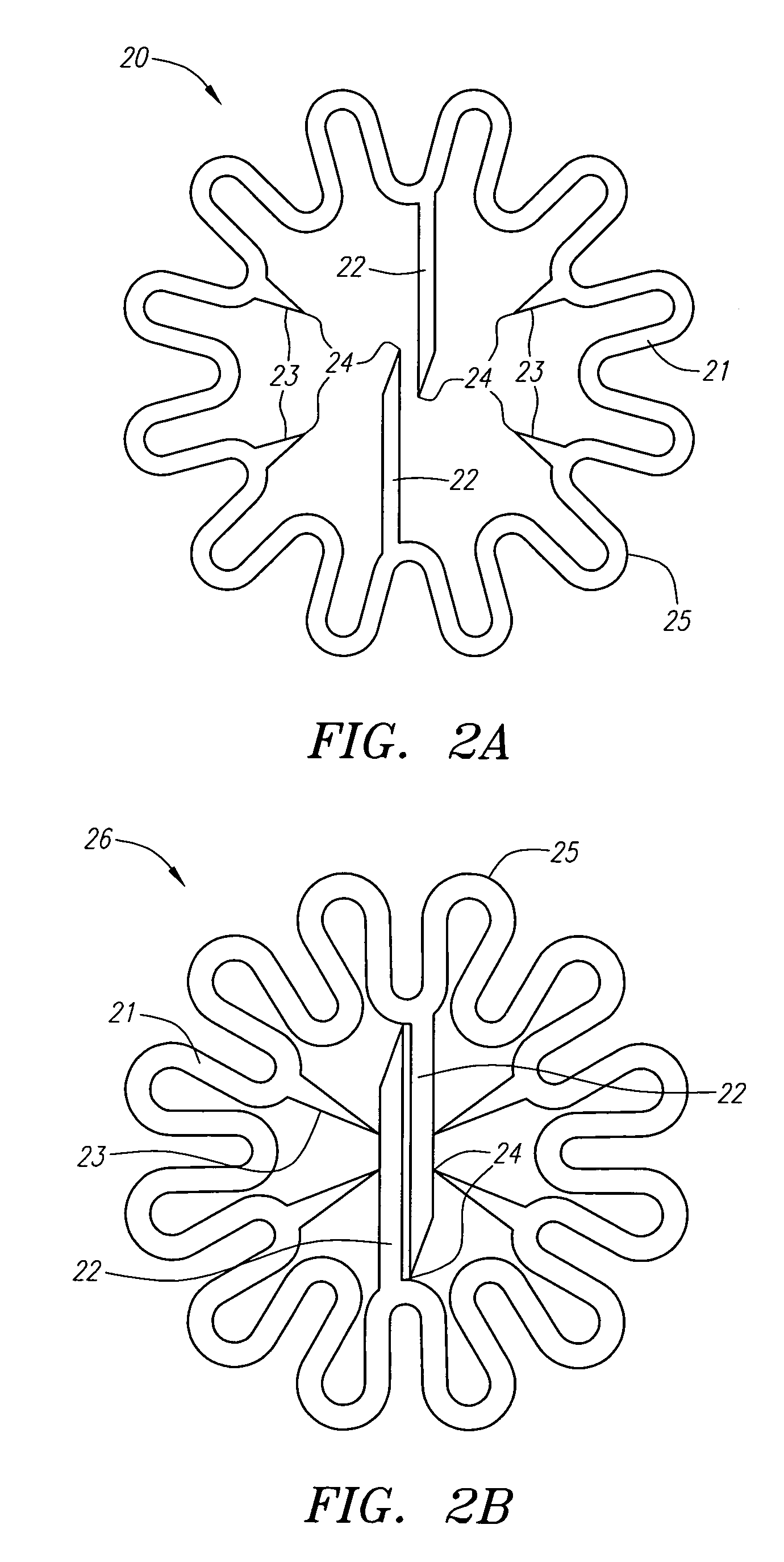Methods for manufacturing a clip and clip
a manufacturing method and clip technology, applied in the field of methods for manufacturing a clip and a clip, can solve the problems of limited minimizing of conventional manufacturing methods, and achieve the effect of reducing the size of the clip's footprint and enhancing the sealing function of the clip
- Summary
- Abstract
- Description
- Claims
- Application Information
AI Technical Summary
Benefits of technology
Problems solved by technology
Method used
Image
Examples
Embodiment Construction
[0011]The clips manufactured according to the present invention are useful for engaging tissue so as to connect tissue segments together or to close and / or seal openings through tissue such as a puncture wound in a body lumen. These clips may be used by deforming them from their generally planar configuration such that the tines are pointing in a direction generally transverse to the plane, holding the clip in this deformed condition, deploying the clip proximal to the tissue to be engaged and removing the deforming force such that the clip engages the tissue and attempts to return to its original generally planar configuration. The methods and apparatus disclosed in the above-mentioned U.S. patent application Ser. Nos. 10 / 081,726 and 09 / 732,178 can be used to deploy the clips of the present invention to engage tissue and close or seal an opening.
[0012]In such use, the deformation of the clip causes the tines to be directed generally axially away from the body of the clip and it is ...
PUM
| Property | Measurement | Unit |
|---|---|---|
| length | aaaaa | aaaaa |
| length | aaaaa | aaaaa |
| temperature | aaaaa | aaaaa |
Abstract
Description
Claims
Application Information
 Login to View More
Login to View More - R&D
- Intellectual Property
- Life Sciences
- Materials
- Tech Scout
- Unparalleled Data Quality
- Higher Quality Content
- 60% Fewer Hallucinations
Browse by: Latest US Patents, China's latest patents, Technical Efficacy Thesaurus, Application Domain, Technology Topic, Popular Technical Reports.
© 2025 PatSnap. All rights reserved.Legal|Privacy policy|Modern Slavery Act Transparency Statement|Sitemap|About US| Contact US: help@patsnap.com



